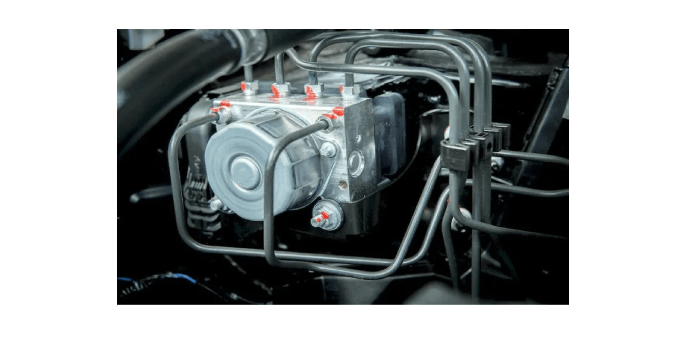Find Your Car Parts Instantly
- Best Price Guarantee Buy with confidence because you aren't getting a better price than this.
- Free Shipping Enjoy the luxury of free shipping on orders above $299.
- A Grade Quality Used Car Parts
Avail the best OEM Auto parts & components that are just as new - Our Friendly Parts Specialist will get you what you need !
ABS control module

The Anti-Lock Braking System(ABS) is a microprocessor that runs diagnostic checks of a vehicle’s antilock braking system and processes information from wheel-speed sensors and the hydraulic brake system to determine when to release braking pressure at a wheel that’s about to lock up and start skidding.
Anti Lock brakes have been available since the 1980s and are standard on all 2012 model-year and later vehicles because they’re an integral part of electronic stability control, which has been required since 2012.
Anti Lock systems prevent skids when braking, and stability control intervenes to prevent skids even when the brakes aren’t applied. A dashboard ABS warning light is supposed to come on for a few seconds every time a vehicle is started, but if it comes on while driving it signals that the control module has conked out, a wheel sensor has failed or another problem has developed. On many vehicles, the brakes should still operate normally when the warning light is on, but the antilock function won’t work. On some vehicles, though, braking ability will be reduced if the antilock system malfunctions, and stability control and traction control (on vehicles with those features) might also be disabled. An ABS warning light usually triggers a trouble code that can be read with a diagnostic tool to help mechanics pinpoint the problem.
Understanding The Anti-Lock Braking System (ABS)
To understand the ABS control module, we first need to know what an ABS is.
The Anti-Lock Braking System (ABS) is designed to prevent your wheels from locking during heavy braking to avoid vehicle skidding or hydroplaning.
It’s an additional safety feature found on many modern vehicle designs that allows for a faster, controlled stop and has been available since the 1980s.
The ABS is also an integral part of electronic stability control (ESC) systems.
Stability controls help prevent your car from skidding even when the brakes aren’t applied.
So, what makes up an anti-lock brake system?
The most common configuration consists of these components:
1. ABS Sensor
The ABS wheel speed sensor detects the speed of a rotating wheel and feeds that information to the ABS control module.
2. ABS Module
The ABS control module is a microprocessor that runs diagnostic checks on a vehicle’s anti-lock braking system and controls the ABS modulator.
3. ABS Modulator
The ABS modulator is also called the ABS pump, Hydraulic Control Unit (HCU), or even ABS motor.
It typically comprises an electrical engine, ABS valves operated by solenoids, and a base where brake hoses (from the master cylinder and to brake caliper at each wheel) are connected.
The hydraulic unit allows electric signals from the ABS control module to control the brake lines’ hydraulic pressure.
It does this through the solenoid, a magnetic coil that opens and closes a valve that regulates brake fluid flow. The number of solenoids and valves used can vary depending on the ABS modulator design.
What happens if the ABS system fails?
The ABS relies on a functioning conventional brake system.
If your vehicle ABS fails, your normal brakes should still function — provided nothing’s wrong with them. You’ll just have to be more careful when braking to avoid skidding.
Now that we’ve gone over what the ABS system is, let’s get into the ABS module.
A Closer Look At The ABS Module
The ABS control module acts as the “brain” of the entire anti-lock brake system. It processes information from the ABS sensors and controls the brake pressure through the ABS modulator.
It has several other names, including:
ABS control unit
ABS controller
ABS unit
Electronic Control Unit (ECU)
In most common car designs, the control module is installed and mounted in the engine compartment. Sometimes, it’s located in the frame rail on the left side of the vehicle.
If an ABS sensor detects that the vehicle is skidding or losing traction, it sends a signal to the ABS module to rapidly pump the brake. This produces intermittent braking and some amount of steering control.
Here’s a snapshot of events between the ABS sensor and ABS control module to give you an idea of how this rapid pumping works:
The ABS sensor detects one tire spinning substantially slower than the others while braking and transmits this information to the ABS control module.
The control module releases the brake pressure on that wheel very briefly so that the tire can regain grip.
The control module then reapplies the brakes on that wheel.
This process repeats several times per second whenever a tire is losing grip under braking.